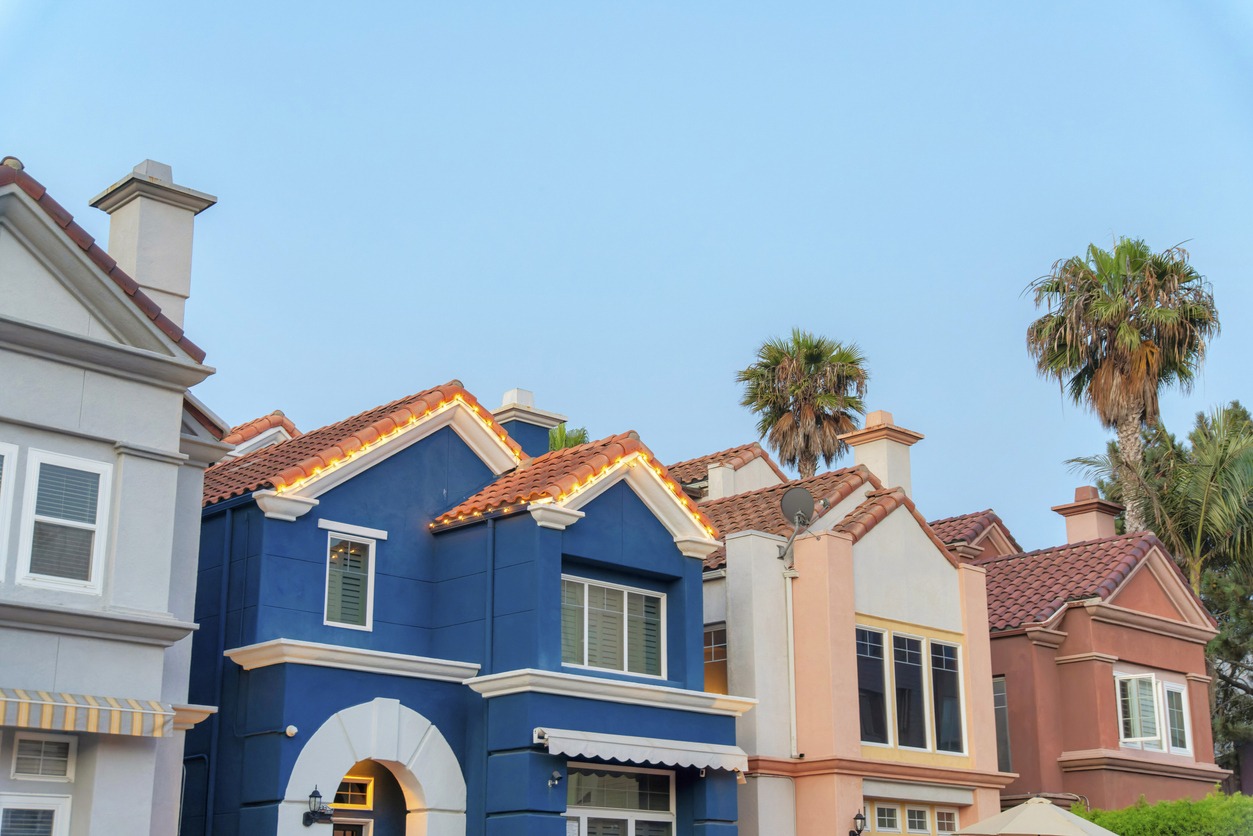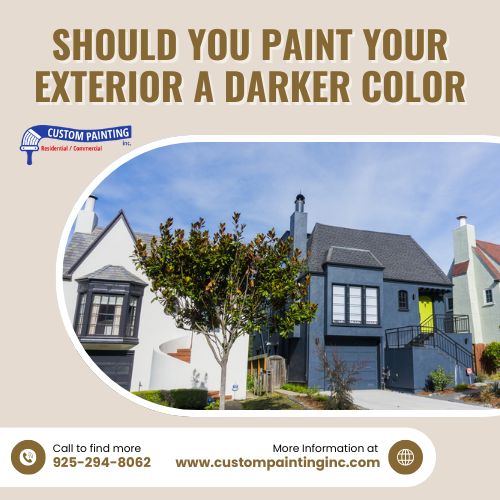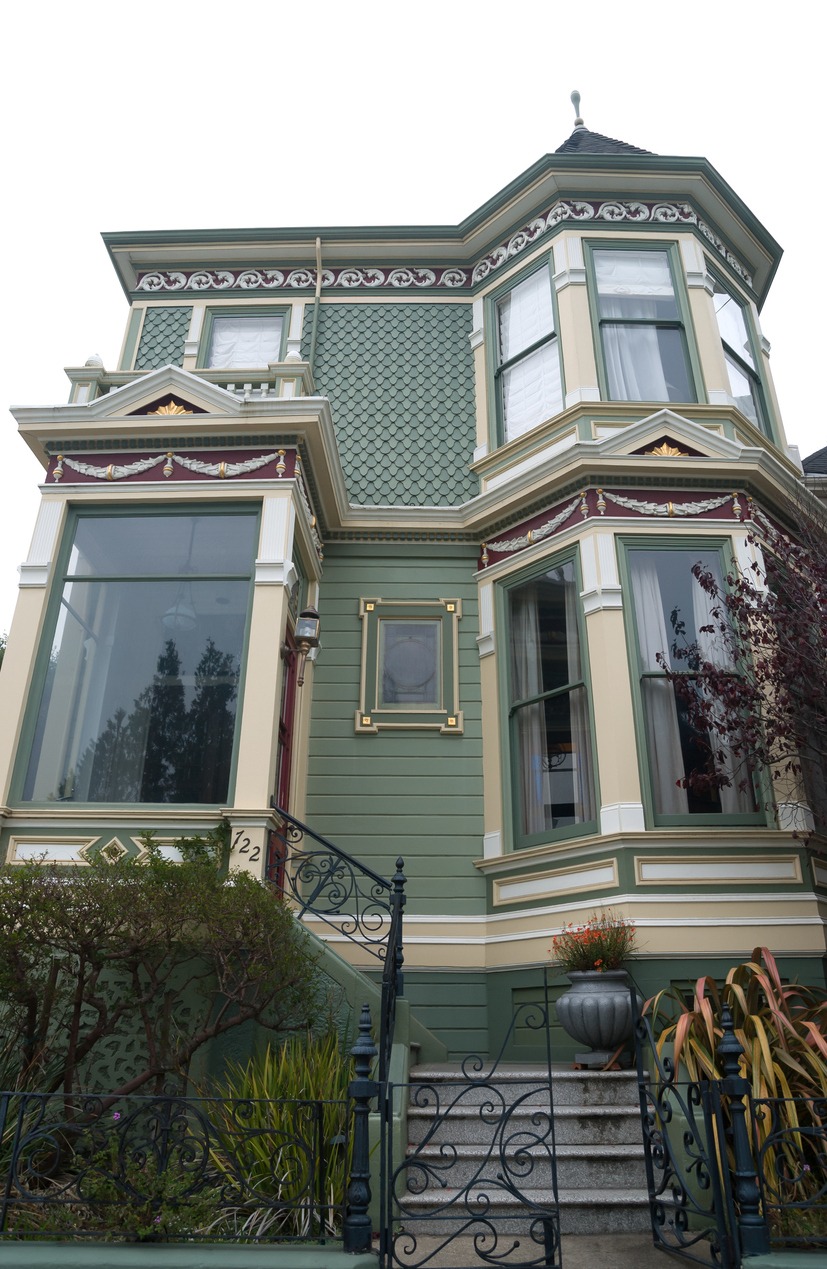Darker exteriors are on the rise, with homeowners and businesses embracing bold, sophisticated color schemes that make a powerful statement. However, selecting an exterior color is about more than looks; it can influence maintenance needs, durability, and even energy efficiency.
This is where a skilled painting company comes in—they can guide clients toward the perfect shade by considering essential factors like climate, building type, and the specific requirements of each project. It’s all about finding a balance that ensures style and functionality for a lasting impact.
Benefits of a darker exterior color
Using a darker exterior color for your home has several compelling benefits:
- Modern and sophisticated appearance: Darker colors like deep charcoal, navy, or even black can lend a sleek, contemporary aesthetic that adds immediate curb appeal. This bold choice can make the property stand out, especially among homes with lighter, traditional colors, and creates a unique, eye-catching look.
- Hides dirt and stains: Unlike lighter colors, which can show every speck of dust, darker shades are more forgiving of dirt and minor stains. This is especially helpful for homes in high-traffic or urban areas, where pollutants and grime can accumulate more quickly. It keeps the exterior looking fresh with less frequent cleaning.
- Enhances architectural details: Darker hues can enhance architectural details by adding depth and contrast. Cornices, trims, and other design features stand out more sharply against a dark background, adding dimension and visual interest to the home’s exterior. This effect highlights craftsmanship and makes decorative features more noticeable.
Potential drawbacks of darker colors
Here’s a quick overview of the potential drawbacks of darker exterior colors for homes:
- Fading over time: Darker colors tend to fade faster due to UV exposure, especially in sunny regions. This can mean more frequent touch-ups or repainting to maintain their original look, potentially adding to maintenance costs.
- Heat absorption: Dark colors absorb more heat, which can increase the temperature of the building’s exterior and even affect indoor temperatures. This heat absorption can raise cooling costs in warm climates, making lighter colors more energy-efficient choices.
- Maintenance considerations: While dark colors do conceal dirt and grime, they can highlight chalking (a white residue that forms over time) and fading more visibly, particularly in high-sun areas. This can make regular maintenance essential to keep the color looking fresh.
Key factors to consider before choosing a darker exterior color

When you’re thinking about going bold with a darker exterior color, there are a few things to consider for the best results:
- Climate and sun exposure: If you’re in a warm, sunny area, remember that dark colors absorb more heat and can lead to higher indoor temperatures. They’re more susceptible to fading from UV exposure. On the flip side, in cooler climates, darker shades can actually add a bit of warmth and coziness.
- Building type and size: A darker exterior can create a grounded, sophisticated look for larger buildings, adding to the visual impact. But on smaller homes, darker tones make the space feel more enclosed or confined, so you may want to balance the darker color with lighter accents to keep it looking open.
- Neighborhood and style: Take a look around! Choosing a color that complements the neighborhood or aligns with your home’s architectural style can make a big difference. While it’s great to stand out, you’ll also want a look that flows with the area rather than clashing with neighboring homes.
Darker exteriors can add drama and elegance to a home—just make sure to balance style with practicality!
Best practices for using dark colors on exteriors
Using dark colors on exteriors can create a striking, sophisticated look when done thoughtfully. Here are best practices:
- Choosing quality, UV-resistant paints: Dark colors tend to fade faster, especially in strong sunlight, so choose high-quality, UV-resistant paints. These are designed to withstand intense sunlight and prevent premature fading, helping maintain the rich tone longer and reducing maintenance needs.
- Incorporating lighter accents: Adding lighter trim or accent colors can balance the boldness of dark hues and prevent the structure from appearing too heavy. Light-colored accents around windows, doors, or rooflines bring contrast, creating a polished and cohesive look while adding depth to the design.
- Strategic placement: Instead of covering the entire exterior, consider using dark colors selectively, such as on lower levels, shutters, or trim. This approach adds sophistication without overwhelming the structure, allowing for a modern feel while preserving balance and visual interest across the exterior.
Alternatives to full dark exteriors
- Accent walls: Instead of applying dark colors to the entire exterior, consider using dark shades on select walls or architectural features like doors, shutters, or trim. This creates a striking contrast and modern appeal without overwhelming the space.
- Two-tone schemes: Pairing a dark color with a lighter shade—such as charcoal gray with a soft beige—can create a dynamic, visually appealing look. This combination also enhances energy efficiency by reflecting more sunlight and reducing heat absorption, making maintenance easier.
- Natural material accents: Combine dark paint with natural materials like wood or stone to soften the intensity of the color. These materials bring warmth and texture, creating an elegant and balanced aesthetic that blends seamlessly with the surrounding environment.
The role of a professional painting company in color selection
A professional painting company is crucial in selecting and applying the right paint for dark exteriors, ensuring aesthetic appeal and longevity.
- Color consultation services: Professionals offer expert guidance on choosing the ideal shade, tone, and finish for dark exteriors. They consider factors like local climate, the building’s architecture, and the surrounding landscape to recommend a color that complements the environment and performs well under varying weather conditions.
- Proper surface preparation and application: A thorough preparation process is essential for dark colors as they tend to highlight imperfections. Professionals ensure surfaces are properly cleaned, repaired, and primed, and they apply paint using the correct techniques to achieve a smooth, durable finish that resists fading, peeling, or chipping.
- Quality assurance and maintenance plans: With a professional team, you can benefit from a maintenance plan that includes regular touch-ups and inspections. This keeps the dark exterior vibrant and protected from wear over time. It also ensures the paint continually looks fresh, saving you from frequent reapplications.
Parting words
The pros of choosing a darker color for the exterior include a modern and sophisticated appearance, the ability to hide dirt and stains, and the enhancement of architectural details. The potential drawbacks to it, on the other hand, include fading colors over time, the tendency to absorb a lot of heat, and possible chalking.
Consider consulting with a commercial painting company to explore if a darker color suits your building’s style and needs. For expert guidance and a high-quality, durable dark exterior, contact Custom Painting, Inc.’s professional team! Our decades of experience in interior and exterior painting, standard service warranties, flexible payment options, and a streamlined process for scheduling your projects put us ahead of other paint companies in California.
Call Custom Painting, Inc. at 925-294-8062 or message us here. Our job estimate includes a free color consultation if needed.


